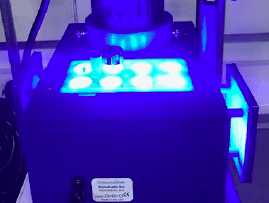
“The reaction was then sealed with a plastic screw cap and placed in a HepatoChem reactor on a stir plate and irradiated for 18 hours with a 34W blue LED and the internal fan was purposely left off to maintain a slightly elevated temperature of ~35 °C.”
Abstract
While carbon-heteroatom cross coupling reactions have been extensively studied, many methods are specific and limited to a set of substrates or functional groups. Reported here is a method that allows for C-O, C-N and C-S cross coupling reactions under one general methodology. We propose that an energy transfer pathway, in which an iridium photosensitizer produces an excited nickel (II) complex, is responsible for the key reductive elimination step that couples aryl halides to 1° and 2° alcohols, anilines, thiophenols, carbamates and sulfonamides.
Authors: jeffrey.johannes@astrazeneca.com

